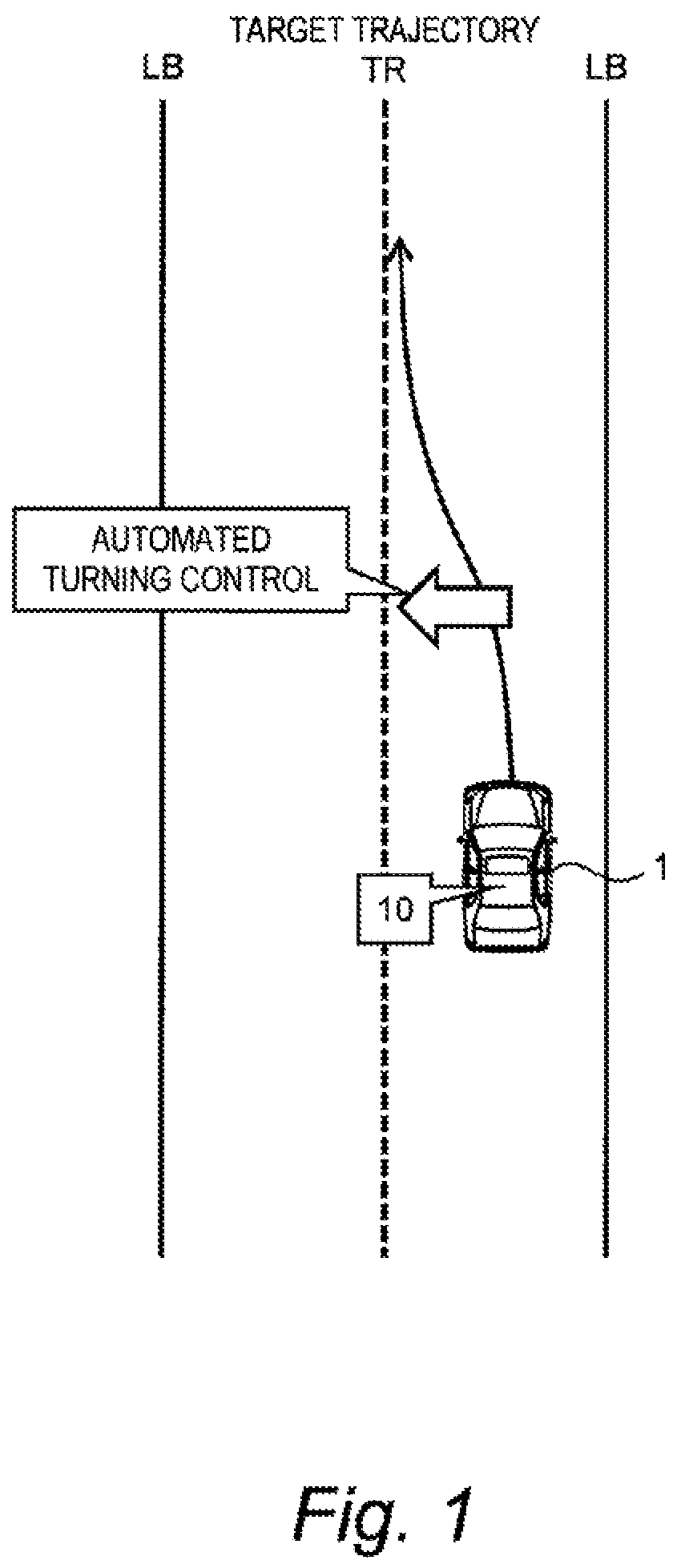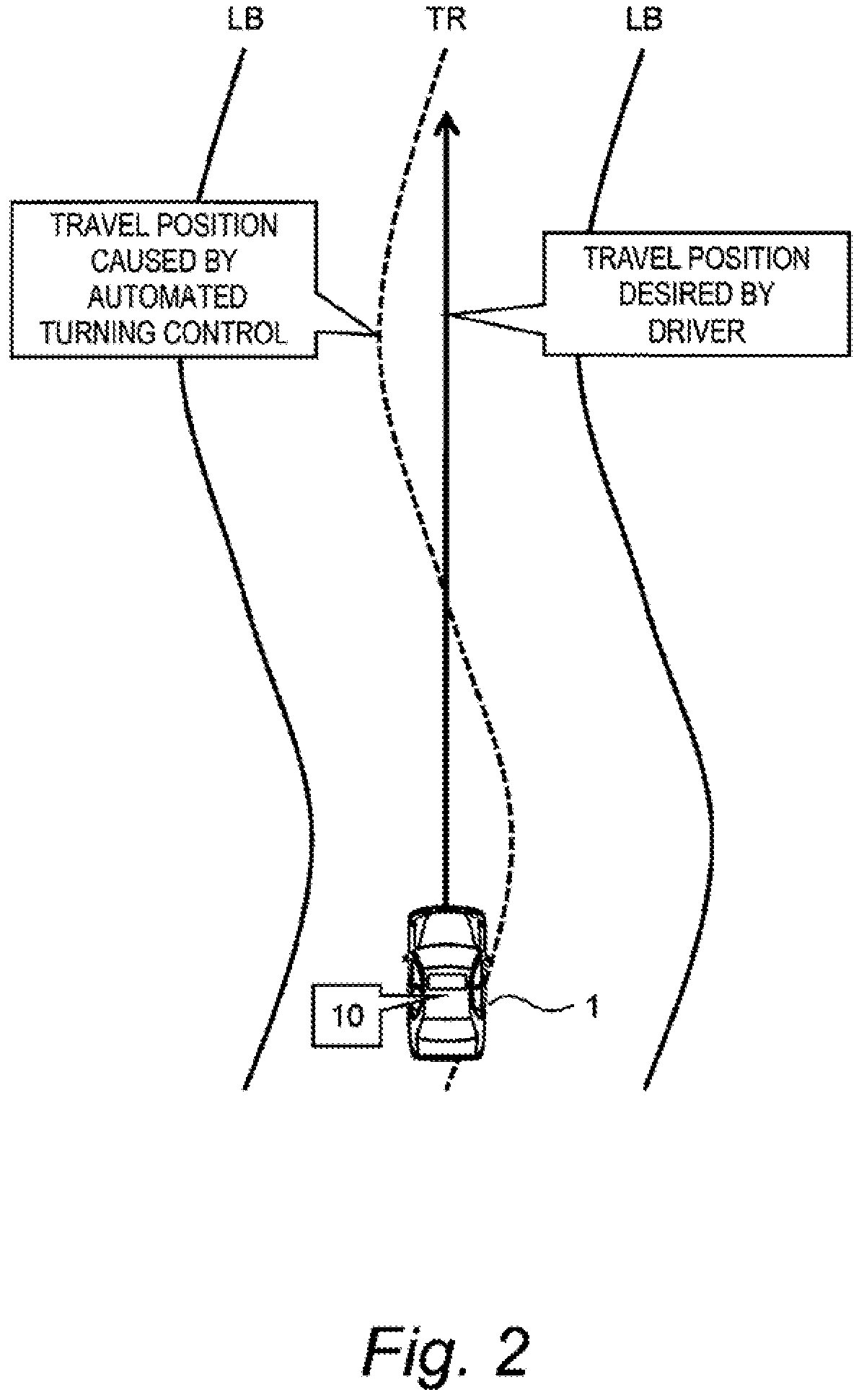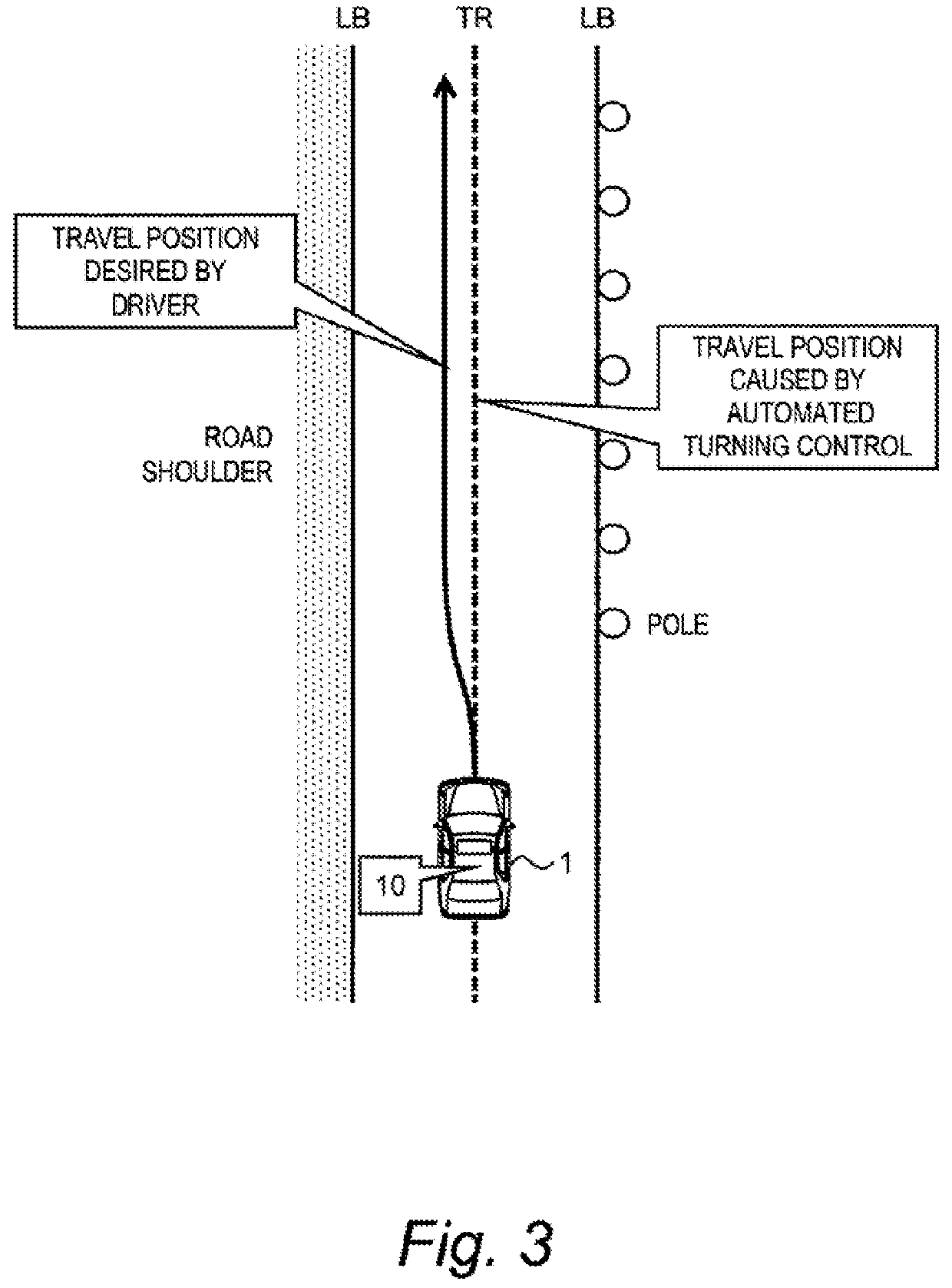Vehicle control system
a vehicle control and steering control technology, applied in the direction of control devices, driver input parameters, vehicle components, etc., can solve the problems of unsteady movement of the vehicle, vehicle travel caused by the automated turning control not necessarily matching the driver's feeling, and vehicle travel not as desired by the driver
- Summary
- Abstract
- Description
- Claims
- Application Information
AI Technical Summary
Benefits of technology
Problems solved by technology
Method used
Image
Examples
first embodiment
1. First Embodiment
1-1. Outline
[0064]FIG. 1 is a conceptual diagram for explaining an outline of a vehicle control system 10 according to a first embodiment. The vehicle control system 10 is installed on a vehicle 1 and controls the vehicle 1. In particular, the vehicle control system 10 at least executes “automated turning control” that automatically turns (i.e. changes a direction of) a wheel of the vehicle 1.
[0065]An example of the automated turning control is trajectory-following control. The vehicle control system 10 determines a target trajectory TR and controls travel (at least one of turning, acceleration, and deceleration) of the vehicle1 such that the vehicle 1 follows the target trajectory TR. Such the trajectory-following control is executed in automated driving control, lane tracing assist (LTA), and the like.
[0066]Another example of the automated turning control is lane departure prevention control that prevents the vehicle 1 from departing from a travel lane. For exam...
second embodiment
2. Second Embodiment
[0131]A second embodiment differs from the above-described first embodiment in the system suppression processing (Step S400). An overlapping description with the first embodiment will be omitted as appropriate.
[0132]FIG. 12 is a block diagram showing a functional configuration related to the system suppression processing according to the second embodiment. The system suppression processing unit 140 strengthens the driver-driven turning control executed by the driver-driven turning control unit 110 instead of weakening the automated turning control executed by the automated turning control unit 120.
[0133]In particular, the system suppression processing unit 140 strengthens the assist control executed by the assist control unit 111 (see FIG. 8). Here, “strengthening the assist control” means increasing influence (contribution) of the assist control on the turning of the wheel 2. As described above, the assist control unit 111 calculates the basic assist control amo...
third embodiment
3. Third Embodiment
[0135]In a third embodiment, a vehicle 1 of a steer-by-wire type is considered. An overlapping description with the first embodiment will be omitted as appropriate.
[0136]FIG. 13 is a block diagram showing a configuration example of the vehicle 1 and the vehicle control system 10 according to the third embodiment. The wheel 2 and the steering wheel 3 (the steering shaft 4) can be mechanically separated from each other. The vehicle control system 10 further includes a reaction torque generation device 30 in addition to the configuration described in the first embodiment (see FIG. 5).
[0137]The reaction torque generation device 30 applies a reaction torque to the steering wheel 3 in a pseudo manner. More specifically, the reaction torque generation device 30 includes a reaction motor (a reaction actuator). A rotor of the reaction motor is connected to the steering shaft 4 through a speed reducer. Actuating the reaction motor makes it possible to apply the reaction tor...
PUM
 Login to View More
Login to View More Abstract
Description
Claims
Application Information
 Login to View More
Login to View More - R&D
- Intellectual Property
- Life Sciences
- Materials
- Tech Scout
- Unparalleled Data Quality
- Higher Quality Content
- 60% Fewer Hallucinations
Browse by: Latest US Patents, China's latest patents, Technical Efficacy Thesaurus, Application Domain, Technology Topic, Popular Technical Reports.
© 2025 PatSnap. All rights reserved.Legal|Privacy policy|Modern Slavery Act Transparency Statement|Sitemap|About US| Contact US: help@patsnap.com



